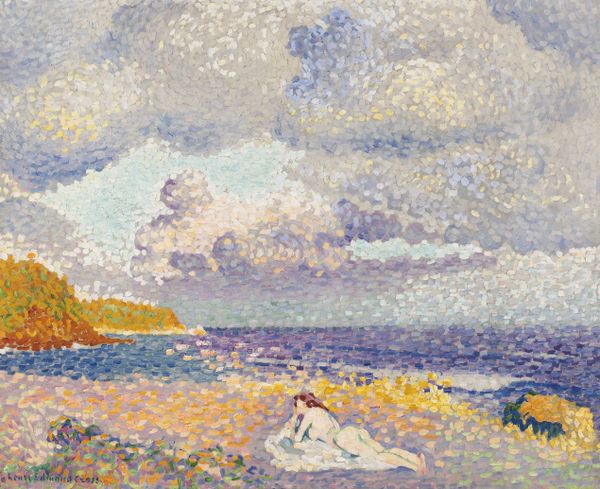Henri-Edmond Cross
(French, 1856-1910)
Henri-Edmond Cross was a French painter and printmaker born on 20th of May 1856. In 1881 changed his name by shortening his birth name to Henri Cross in order to distinguish himself from Eugene Delacroix.
Cross is most acclaimed as a master of Neo-Impressionism and played an important role in shaping the second phase of that movement. His work was also instrumental in the development of Fauvism and works of Henri Matisse.
Cross’s artistic talents were recognised by Dr. Auguste Soins, who financed his first drawing instructions under painter Carolus-Duran. Henri became Duran’s protégé for a year. His art education continued throughout his all adulthood.
1881 was the year of his first exhibition at the Salon des Artistes Francais. Later in the year he exhibited at Nice’s Exposition Universelle. That same year Cross met Paul Signac, who became a close friend and artistic influence.
In 1884 Cross co-founded the Societe des Artistes Independants, which consisted if artists displeased with the practices of the official Salon, and presented unjuried exhibitions without prizes.
Henri’s early works, mostly portraits and still lives, were in the dark colour of Realism. Eventually his colour palette became lighter resembling Impressionism. He also worked en plein air. In the latter part of 1880s, he painted pure landscapes that were heavily influenced by Claude Monet and Camille Pissarro.
In 1891 Cross began painting in the Neo-Impressionist style, and exhibited his first large piece using in an independent show. That painting was a divisionist portrait of Madame Hector France, whom Cross would marry in 1893. Cross’s affinity with the Neo-Impressionist movement extended beyond the painting style to include their political philosophies. Like Signac, Pissarro, and other Neo-Impressionists, Cross believed in anarchist principles, with hope for a utopian society, which became the main subject of his paintings.
Cross’s paintings of the early to mid 1890s are characteristically Pointillist. Beginning around 1895 he gradually shifted his technique, instead using broad, blocky brushstrokes and leaving small areas of exposed bare canvas between the strokes. Matisse, Andre Derain, Henri Manguin, Charles Camoin, and other artists were very influenced by the late career of Cross, and his works became instrumental in forming the principles of Fauvism.
In 1905 Galerie Druet in Paris held Cross’s first solo exhibition, which was very successful.
Henri Cross’s artworks are being housed in Brooklyn Museum, Fine Arts Museums of San Francisco, Hermitage Museum, Metropolitan Museum of Modern Art, Musee d’Orsay and in many others.
Cross dies of cancer on 16th of May 1910.

